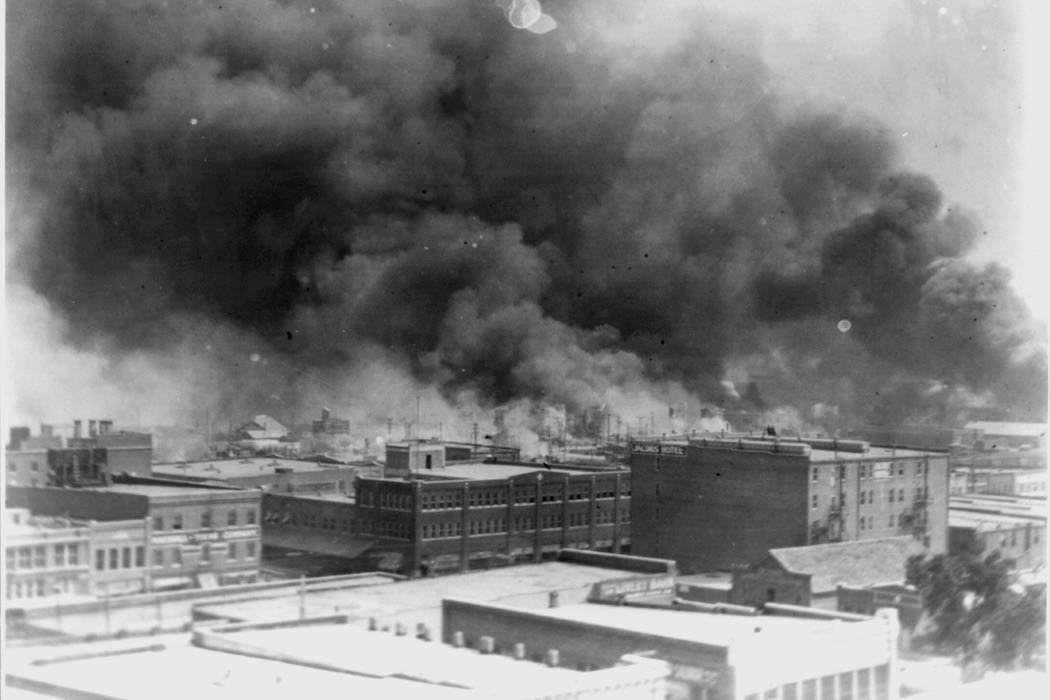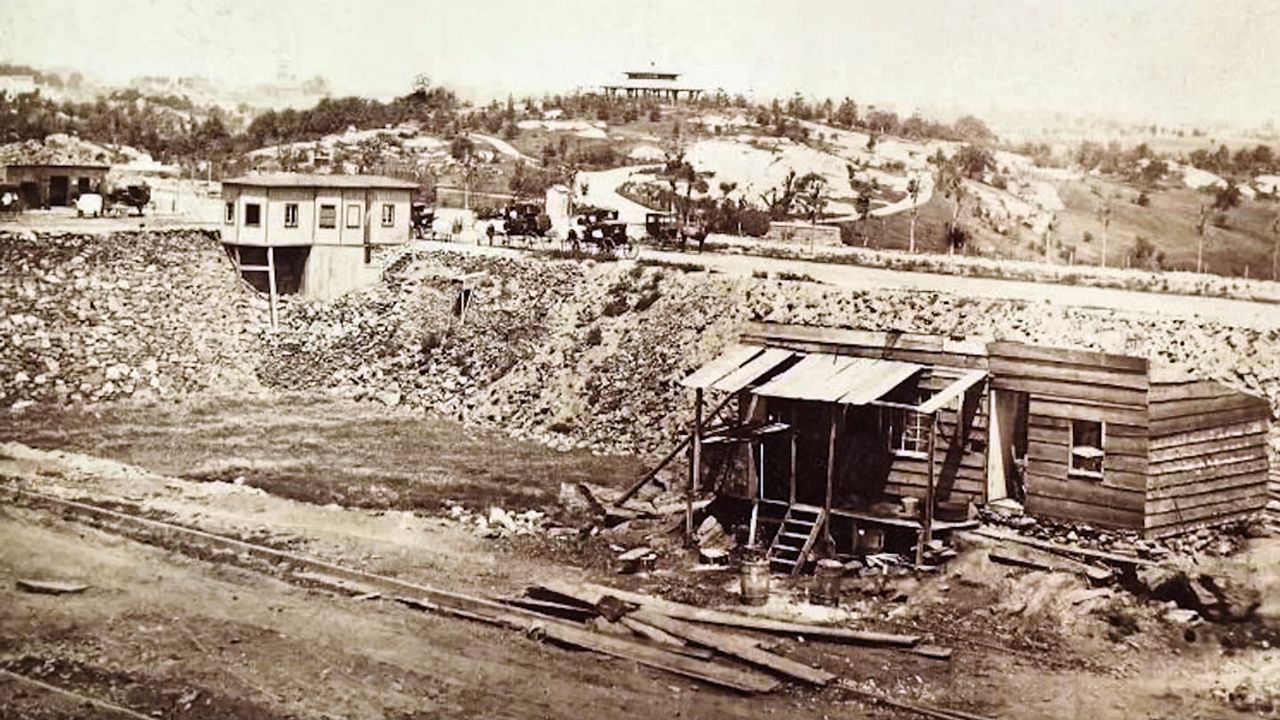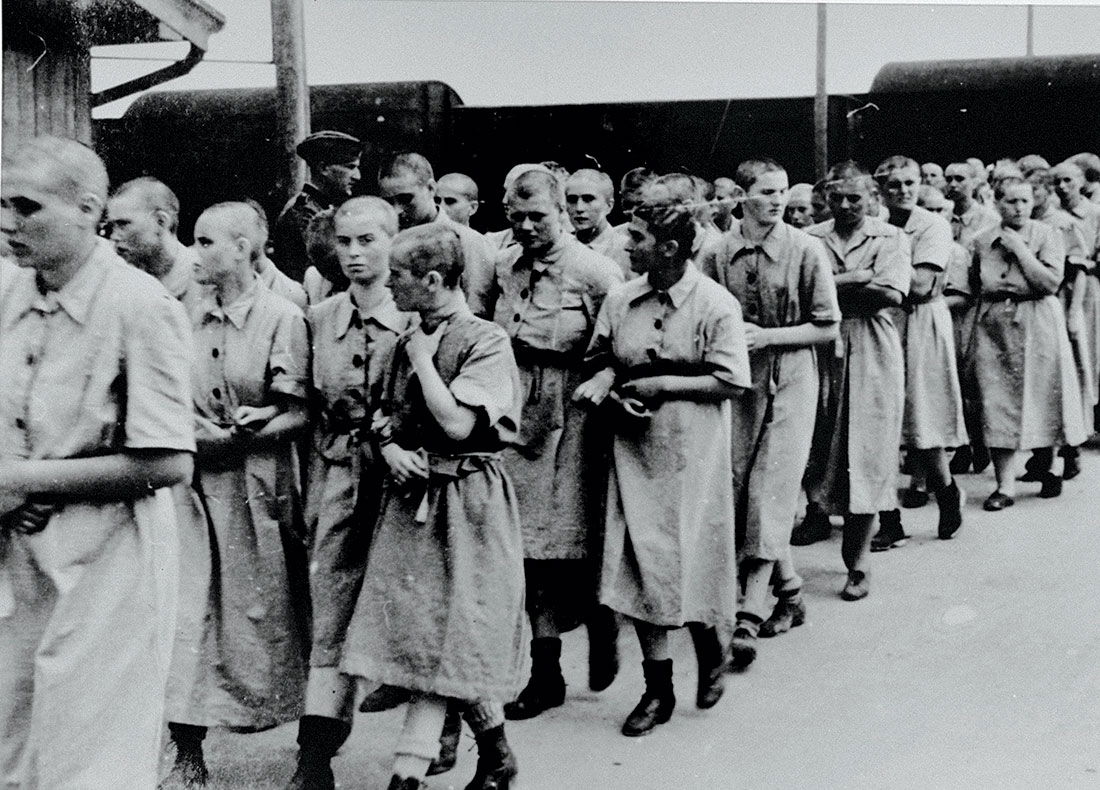NoirDynosaur
Yurrrrrrrrrr
Look throughout history, most of these forces were co-joined through the emotion of insecurity. Insecurity comes in many forms - financial, religious, mental etc. Fear is the common denominator of insecurity.
Racial insecurity - When a certain ethnic group gets jealous, envious or resentful because of achievements, success and business prospects.
* Black Wall Street

Seneca Village (present day Central Park)

* Extermination of Natives (Caribbean, Oceania) and Blacks (Africa, U.S., Caribbean)

Holocaust (Germany)

Destruction of African Civilizations (100 ADVANCE AFRICAN CIVILIZATIONS DESTROYED BY EUROPEANS!)
Emotional insecurity. When a certain individual/group tries to use gaslighting tactics to give them power or feel secured. Heavily used by Narcissists
Link: 6 Ways Gaslighting Completely Destroys Your Reality
Religious Insecurity. When a particular religious groups gets threatened by another religious group' expansion.
The Crusades

Wars of Religion in France
Cologne War in Germany
Link: Wars of Religion in France
Link: Wars of Religion in France
This is just Pt. 1
Pt. 2 will focus on politicians that got exterminated, musicians who got murdered and variety of topics. Stay tuned
Racial insecurity - When a certain ethnic group gets jealous, envious or resentful because of achievements, success and business prospects.
* Black Wall Street

Seneca Village (present day Central Park)

* Extermination of Natives (Caribbean, Oceania) and Blacks (Africa, U.S., Caribbean)

Holocaust (Germany)

Destruction of African Civilizations (100 ADVANCE AFRICAN CIVILIZATIONS DESTROYED BY EUROPEANS!)
Emotional insecurity. When a certain individual/group tries to use gaslighting tactics to give them power or feel secured. Heavily used by Narcissists
How do to respond to this? Indifference and Being selective who you mate with. Remember, insecure people are secure with themselves. They need some sort of power to feel acknowledged.
6 TYPES OF GASLIGHTING:
1. Countering
Countering is when someone makes you question your memory. They may say things such as “You’re wrong. You never remember things correctly,” or “Are you sure? You know you have a bad memory.”
2. Withholding
When someone withholds, they refuse to engage in a conversation. A person using this technique may pretend to not understand someone so they do not have to respond to them. For example, they might say, “I don’t know what you are talking about,” or “you’re just trying to confuse me.”
3. Trivializing
This occurs when a person belittles or disregards the other person’s feelings. They may accuse them of being too sensitive or overreacting when they have valid concerns and feelings.
4. Denial
Denial involves a person pretending to forget events or how they occurred. They may deny having said or done something or accuse someone of making things up.
5. Diverting
With this technique, a person changes the focus of a discussion and questions the other person’s credibility instead. For example, they might say, “that is just another crazy idea you got from your friends.”
6. Stereotyping
A person using gaslighting techniques may intentionally use negative stereotypes of a person’s gender, race, ethnicity, sexuality, nationality, or age to manipulate them. For example, they may tell a female that people will think she is irrational or crazy if she seeks help for abuse.
Link: 6 Ways Gaslighting Completely Destroys Your Reality
Religious Insecurity. When a particular religious groups gets threatened by another religious group' expansion.
The Crusades

The Crusades were organized by western European Christians after centuries of Muslim wars of expansion. Their primary objectives were to stop the expansion of Muslim states, to reclaim for Christianity the Holy Land in the Middle East, and to recapture territories that had formerly been Christian. Many participants also believed that undertaking what they saw as holy war was a means of redemption and a way of achieving expiation of sins.
Wars of Religion in France
The 'Wars of Religion' took place in France over the course of four decades, from 1562-1598. Rather like the Hundred Years War, they consisted of a series of wars rather than one continuous conflict. But this time it was a long series of civil wars, between Catholics and Protestants (known as Huguenots - hence the wars are also referred to as the Huguenot Wars) , that led to so much bloodshed.
At the time the wars started, the Huguenots constituted just 7% of the population of France. But by a geographical accident, they found themselves strategically placed for a battle that was really as much of a political battle as a religious battle. The big struggle was between the King and the great noble families, and the protestant struggle to be able to worship freely got tied up with this political struggle.
Henry of Navarre, later to become Henry IV, was a Protestant leader, after Lois I de Condé and Gaspard de Coligny; the Catholics were led by the Guise family, with the support of the 'Politiques'. Catherine de Medici and her sons played an important role as they moved between the two sides.
Francis II became King of France in 1559, when he was just 15 years old. Trying to take advantage of his weak position, the Guises and two other families battled to control the throne, and the Guises won through - they were also fanatical Catholics.
When Francis II died just a year later, his even younger brother (Charles IX) took the throne, but because of his young age it was his mother, Catherine de Medici, who controlled the kingdom. Catherine de Medici, seeing the threat posed by the Guise family, gave support to the two other leading noble families, the Bourbons and the Montmorency-Chatillons. But supporting these two families meant she had to support the Huguenots, and in 1562 the right was granted to Huguenots to worship outside towns, and to hold church assemblies. But Catherine de Medici herself remained a Catholic.
In March 1562, all this religious freedom had become too much for the Guise family, and the Duke of Guise led an army against a protestant church in Champagne. The entire congregation, unarmed men, women and children were slaughtered (see picture: the Massacre of Wassy)
This was to be the start of almost 40 years of war. During the first three civil wars (1562–63, 1567–68, 1568–70) Catherine de Medici struggled to find a balance between the Catholic and Protestant sides, with some success, and a temporary peace was found in 1570.
But this was not too last. Catherine plotted with the Guise family to assassinate a member of the Montmorency-Chatillons family, but the plot failed and the truth of the attempt soon emerged. A Protestant uprising seemed likely, and to pre-empt this Catherine persuaded Charles IX to act first. The most infamous period of the wars was about to start.
Cologne War in Germany
- The Cologne War (German: Kölner Krieg, Kölnischer Krieg; also "Truchsessischer Krieg"; 1583–88) was a conflict between Protestant and Catholic factions that devastated the Electorate of Cologne, a historical ecclesiastical principality of the Holy Roman Empire, within present-day North Rhine-Westphalia, in Germany. The war occurred within the context of the Protestant Reformation in Germany and the subsequent Counter-Reformation, and concurrently with the Dutch Revolt and the French Wars of Religion. Also called the Seneschal's War (Truchsessischer Krieg) or the Seneschal Upheaval (Truchsessischer Wirren) and occasionally the Sewer War, the conflict tested the principle of ecclesiastical reservation, which had been included in the religious Peace of Augsburg (1555). This principle excluded, or "reserved", the ecclesiastical territories of the Holy Roman Empire from the application of cuius regio, eius religio, or "whose rule, his religion", as the primary means of determining the religion of a territory. It stipulated instead that if an ecclesiastical prince converted to Protestantism, he would resign from his position rather than force the conversion of his subjects. In December 1582, Gebhard Truchsess von Waldburg, the Prince-elector of Cologne, converted to Protestantism. The principle of ecclesiastical reservation required his resignation. Instead, he declared religious parity for his subjects and, in 1583, married Agnes von Mansfeld-Eisleben, intending to convert the ecclesiastical principality into a secular, dynastic duchy. A faction in the Cathedral Chapter elected another archbishop, Ernst of Bavaria. Initially, troops of the competing archbishops of Cologne fought over control of sections of the territory. Several of the barons and counts holding territory with feudal obligations to the Elector also held territory in nearby Dutch provinces; Westphalia, Liege, and the Southern, or Spanish Netherlands. Complexities of enfeoffment and dynastic appanage magnified a localized feud into one including supporters from the Electorate of the Palatinate and Dutch, Scots, and English mercenaries on the Protestant side, and Bavarian and papal mercenaries on the Catholic side. The conflict coincided with the Dutch Revolt, 1568–1648, encouraging the participation of the rebellious Dutch provinces and the Spanish. In 1586, the conflict expanded further, with the direct involvement of Spanish troops and Italian mercenaries on the Catholic side, and financial and diplomatic support from Henry III of France and Elizabeth I of England on the Protestant side. The war concluded with victory of the Catholic archbishop Ernst, who expelled the Protestant archbishop Gebhard from the Electorate. This outcome consolidated Wittelsbach authority in north-west Germany and encouraged a Catholic revival in the states along the lower Rhine. More broadly, the conflict set a precedent for foreign intervention in German religious and dynastic matters, which would be widely followed during the Thirty Years' War (1618–48). (en)
Link: Wars of Religion in France
Link: Wars of Religion in France
This is just Pt. 1
Pt. 2 will focus on politicians that got exterminated, musicians who got murdered and variety of topics. Stay tuned

